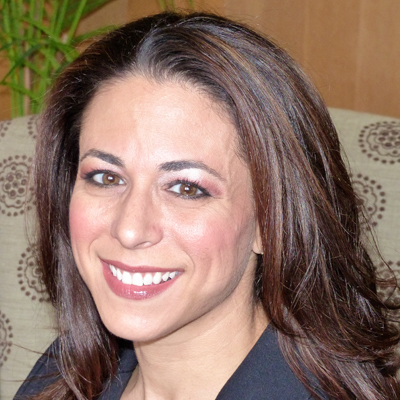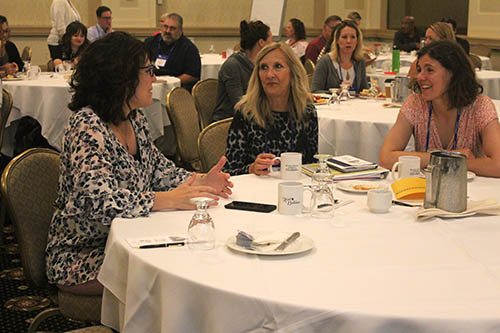The IIRP Summer Symposium, Advancing Community Well-Being Through Restorative Practices, was a dynamic two-and-a-half-day experience. Through interactive activities, lecture and open-ended questions, IIRP faculty and other speakers challenged participants to think about community health and restorative practices in new ways.
Community health is a multi-disciplinary field that applies public health science to improve health and quality of life for everyone in a community. Restorative practices is an emerging social science that studies how to strengthen relationships between individuals, as well as social connections within communities.
While restorative practices can respond to harm and help repair relationships, most of the time the practices should be employed proactively, to build community and prevent harm. The Symposium focused on this proactive approach.
Community health practitioners can utilize restorative practices to create a social environment that fosters health and well-being in a systemic and sustainable way.
 Gina Baral Abrams, Dr.P.H."Restorative practices can be an innovative prevention strategy for improving the social determinants of health — the social factors known to influence well-being, including connectedness and belonging, sense of community, and collective efficacy," explains Gina Baral Abrams, Dr.P.H., IIRP Director of Research and Program Evaluation and Assistant Professor, who led the Symposium.
Gina Baral Abrams, Dr.P.H."Restorative practices can be an innovative prevention strategy for improving the social determinants of health — the social factors known to influence well-being, including connectedness and belonging, sense of community, and collective efficacy," explains Gina Baral Abrams, Dr.P.H., IIRP Director of Research and Program Evaluation and Assistant Professor, who led the Symposium.
At the Symposium, Henry L McClendon, Jr., IIRP Michigan Regional Representative and Vice Chair of the IIRP Board of Trustees, shared an example of how linking community health and restorative practices has worked in the real world. After his home city of Detroit lost more than a million residents and declared bankruptcy, residents' sense of well-being hit rock bottom. At Henry’s urging, Detroit began implementing restorative practices on the intrapersonal, interpersonal, organizational, community and policy levels (the five levels of influence in the community health Social Ecological Model).
For several years, McClendon oversaw restorative practices education in neighborhoods, schools, social services and criminal justice, supported by partnerships with the community organizations, The Skillman Foundation and Black Family Development, Inc. Then, he and a multi-sector leadership council shared what they had learned with their circles of influence and strategically engaged leaders from across sectors, including police, courts, education, corrections and healthcare.
"Getting the right people in the room is not enough," notes Dr. Abrams. "Successful multi-sector community health efforts need an explicit model for  Henry McClendonhow people will relate as they work together toward a common agenda."
Henry McClendonhow people will relate as they work together toward a common agenda."
The Symposium presented information in an arc that built day by day. Participants received the same information, then broke into groups of their choice: focusing on higher education, K-12 education or family and community. Sitting in circles, participants learned from each other as they discussed how to apply the information they had learned in their own settings.
Fifteen Symposium attendees further enhanced their learning by participating in the IIRP Graduate School online course RP 570. Each student developed a plan for their own community by writing a case study about a real problem. They then worked together to explore possible solutions through feedback from other students and insights gained from the entire blended learning experience.
"Digging into coursework that exposed me to the power of preventative care, asset-based community health forums, community engagement and how restorative practices could enhance such practices was enlightening," comments St. Claire Adriaan, a middle school principal in New York City and IIRP master's degree student who participated in the Symposium and the online course. "Writing and analyzing my own case study based on this knowledge confirmed that one person can make a difference and that restorative practices is a powerful tool to ensure a community's health and well-being."

